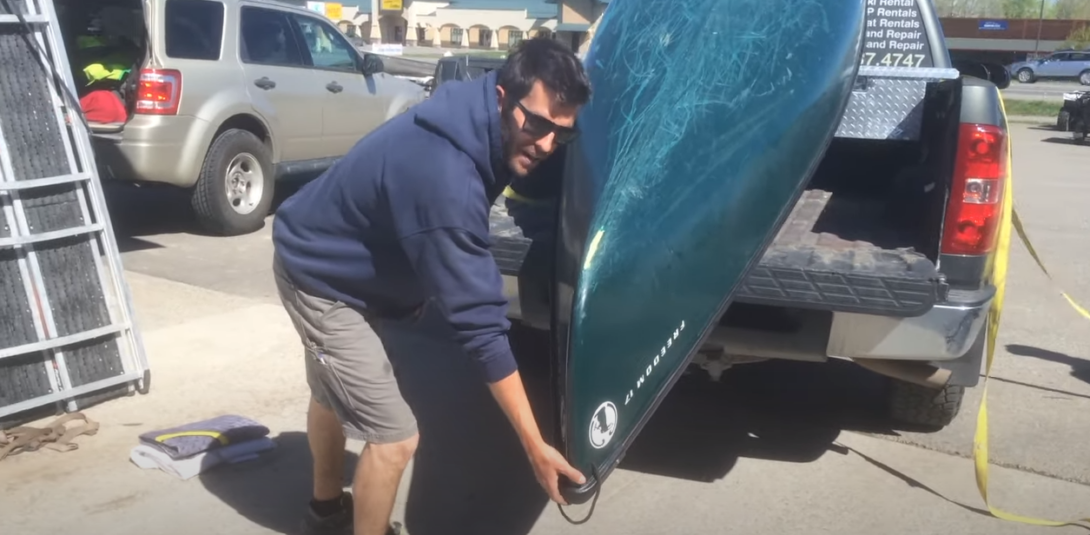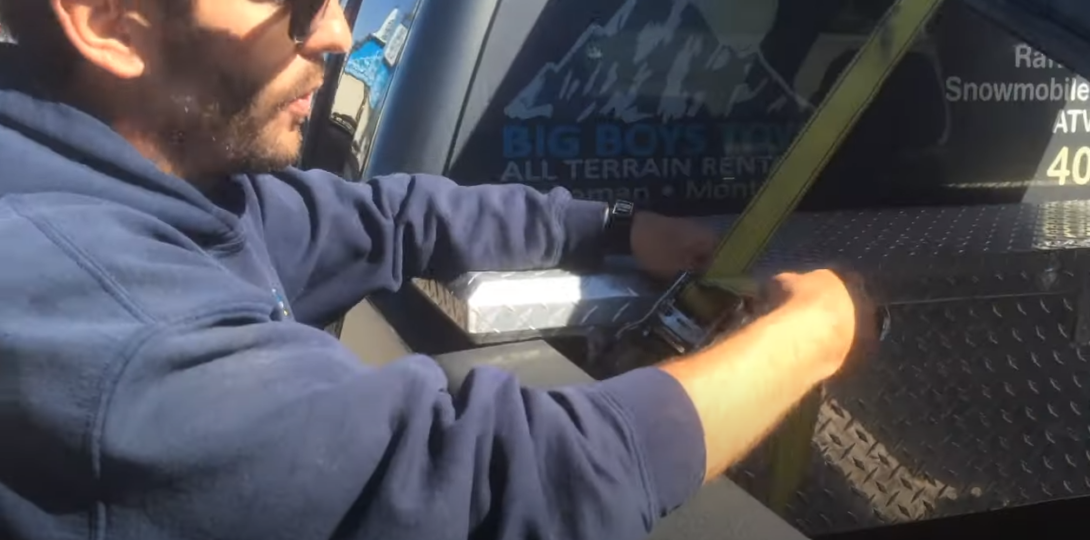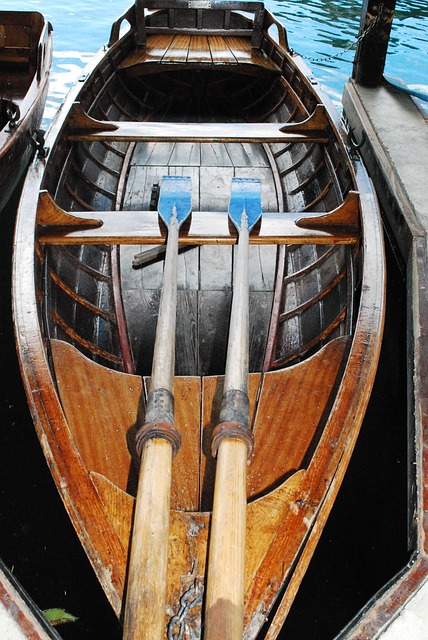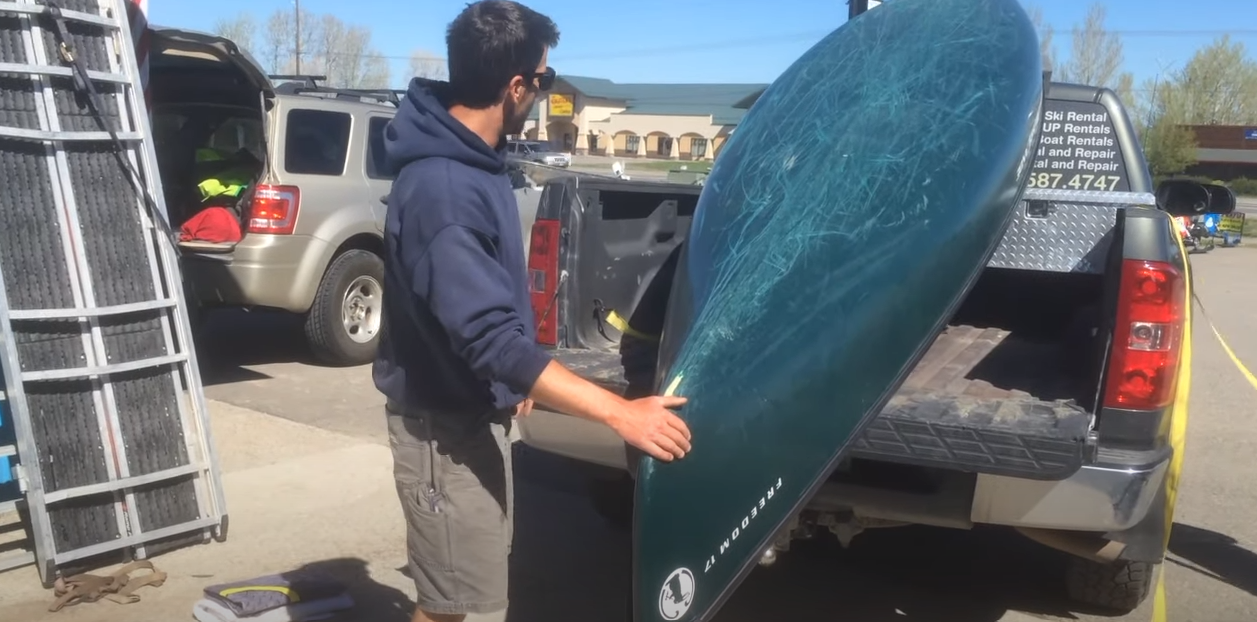Whether you’re an avid outdoor enthusiast or just looking to enjoy a relaxing day on the water, transporting a canoe in a truck bed can provide a convenient and efficient solution. This article will delve into the various aspects of safely and securely transporting a canoe in your truck bed. From preparation and loading techniques to safety measures and frequently asked questions, we’ve got you covered. For a visual guide, be sure to check out this video.
Preparation: Setting the Stage for a Safe Journey
Before you hit the road with your canoe securely stowed in your truck bed, it’s crucial to prepare both your vehicle and your canoe to ensure a smooth and safe journey.
Step 1: Choose the Right Canoe and Truck
Before you set out on the open road, it’s imperative to match the dimensions and weight of your canoe to your truck bed’s capacity. To provide you with a clear overview, here’s a detailed comparison table:
| Canoe Specifications | Truck Bed Capacity |
|---|---|
| Length | Bed Length |
| Width | Bed Width |
| Weight | Weight Capacity |
| Shape and Style | Bed Type (Open/Closed) |
A mid-sized or full-sized truck with a longer bed offers superior suitability for transporting canoes. This thoughtful selection minimizes the chances of overhang and provides a more stable foundation for your canoe.
Step 2: Gather the Necessary Equipment
To ensure a hassle-free loading and unloading process, assembling the right equipment is paramount. Here’s a meticulously curated table of essentials that you need:
| Equipment | Purpose |
|---|---|
| Ratchet straps or tie-downs | Provide reliable tension to secure the canoe. |
| Foam blocks or canoe brackets | Create a cushioned barrier between canoe and bed. |
| Non-slip padding or towels | Prevent shifting and enhance stability. |
| Safety flags or markers | Improve visibility for other drivers. |
Step 3: Measure and Secure the Truck Bed
Accurate measurements and secure fastening are pivotal to the safety of your journey. Here’s the breakdown of this step in a tabulated format:
| Process | Description |
|---|---|
| Measure the dimensions | Take precise measurements of your truck bed, cross-referencing them with your canoe’s specifications. |
| Implement non-slip padding | Line the truck bed with non-slip padding or towels to prevent unintended movements. |
| Arrange foam blocks or brackets | Position foam blocks or canoe brackets strategically to create a stable base for your canoe. |
Loading Techniques: Getting Your Canoe Ready for the Journey

Loading a canoe onto a truck bed requires careful technique to prevent damage to your canoe or your vehicle. Here’s a step-by-step guide to help you load your canoe safely.
Step 1: Position the Canoe
A crucial foundation for successful canoe loading lies in the positioning of your foam blocks or canoe brackets. Picture this: you’re setting the stage for a harmonious dance between the canoe and your truck bed. In the meticulously crafted table below, we break down this process with an artistic touch:
| Step | Description |
|---|---|
| Positioning | Place foam blocks or canoe brackets in the truck bed to create a stable platform. |
| Alignment | Position the blocks or brackets at a distance that corresponds to the canoe’s hull shape. |
| Stability | Ensure the blocks or brackets form a secure, balanced base for the upcoming act – loading the canoe. |
Step 2: Lift and Place
Imagine a ballet duet as you and your partner lift the canoe with grace and precision, ensuring no jarring movements. It’s a symphony of teamwork and technique, leading to a seamless transition.
- Lift Together: With synchronized effort, gently lift the canoe off the ground, using your legs for power rather than straining your back;
- Guided Descent: Slowly place the canoe onto the foam blocks or brackets, with a gentle touch to prevent sudden impacts;
- Centered Alignment: Pay attention to centering the canoe within the truck bed, achieving perfect harmony with your vehicle.
Step 3: Secure the Canoe
Now comes the grand finale – securing the canoe in its rightful place. Think of this step as the climactic peak of your performance. The following table orchestrates the method with precision:
| Process | Description |
|---|---|
| Strap Placement | Use ratchet straps or tie-downs to create a web of security around the canoe. |
| Attachment Points | Fasten the straps to the truck’s tie-down points or bed hooks, ensuring a strong connection. |
| Strap Looping | Loop the straps around the canoe’s gunwales or thwarts, creating a snug embrace that prevents shifting. |
| Even Tension | Tighten the straps evenly on both sides, like tuning the strings of a musical instrument, for stability. |
Step 4: Check Stability
As the curtains draw close on the loading process, it’s time for the final curtain call – ensuring the stability of your setup. A gentle shake, like an artist’s signature stroke on canvas, confirms that your masterpiece is secure and ready for its journey.
Safety Measures: Ensuring a Trouble-Free Journey

Safety should always be a top priority when transporting any load, especially a large and potentially unwieldy object like a canoe.
1. Secure Loose Items
Before setting out, conduct a thorough inspection of your canoe to ensure that no loose items or gear remain within it. By removing loose gear and securing it separately, you can prevent the inadvertent jettison of items during transit. This could include life vests, paddles, fishing gear, or any personal belongings. A neatly cleared canoe not only reduces the risk of objects falling onto the road but also minimizes potential damage to your gear.
2. Use Safety Flags
Enhancing the visibility of your canoe is paramount, especially if it extends beyond the confines of your truck bed. To achieve this, consider attaching safety flags or markers to both the bow and stern of your canoe. These vibrant indicators serve as eye-catching beacons for other drivers, drawing attention to your extended load. By effectively signaling your presence on the road, you significantly mitigate the chances of accidents stemming from poor visibility.
3. Drive Cautiously
Navigating the open road with a canoe in tow mandates a cautious driving approach. A canoe’s streamlined structure can readily catch wind, potentially impacting the stability of your vehicle. Consequently, adopt a moderate speed and avoid abrupt maneuvers. Smooth, calculated driving lessens the risk of sudden shifts in your canoe’s balance, ensuring a consistent and controlled journey. This measure not only safeguards your cargo but also contributes to the safety of other road users.
Now, let’s encapsulate these safety measures in an engaging table for quick reference:
| Safety Measure | Description |
|---|---|
| Secure Loose Items | Remove loose gear from the canoe and store it separately to prevent items from falling out during transit. |
| Use Safety Flags | Attach safety flags or markers to the canoe’s bow and stern to enhance visibility for other drivers. |
| Drive Cautiously | Maintain a moderate speed and avoid sudden maneuvers to counteract the impact of wind on stability. |
Conclusion
Transporting a canoe in a truck bed can be a convenient and efficient way to enjoy outdoor adventures. By following the preparation, loading, and safety techniques outlined in this guide, you can ensure a trouble-free journey for both your canoe and your truck. Always prioritize safety and secure your load properly before hitting the road. For a better understanding of the entire process, be sure to watch this video demonstration.
FAQ
While it’s possible to transport a canoe in a short bed truck, it may require some additional measures, such as using a bed extender or slightly angling the canoe diagonally to fit within the bed’s confines.
Yes, you can transport multiple canoes in a truck bed by using foam blocks or brackets to separate and secure them. Make sure to distribute the weight evenly and secure each canoe individually.
If your canoe extends beyond the truck bed, use safety flags to make it more visible to other drivers. However, avoid overhanging too much, as it can affect the truck’s balance and safety.
Yes, you can use a similar method to transport a kayak in a truck bed. However, kayaks are often shorter and lighter than canoes, so they might require different securing techniques.
Ratchet straps should be tight enough to secure the canoe but not so tight that they damage the canoe or cause unnecessary strain on the truck bed.



